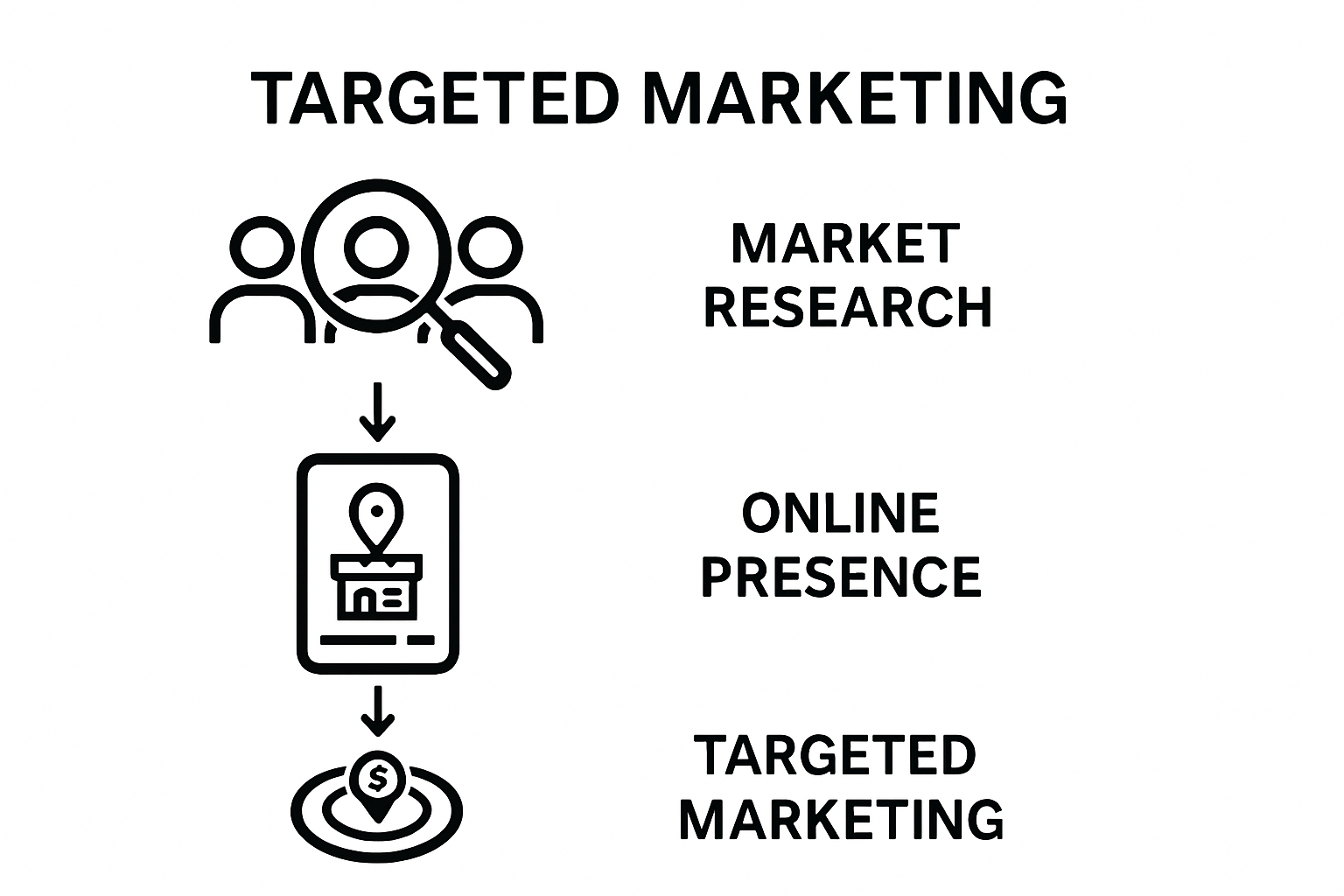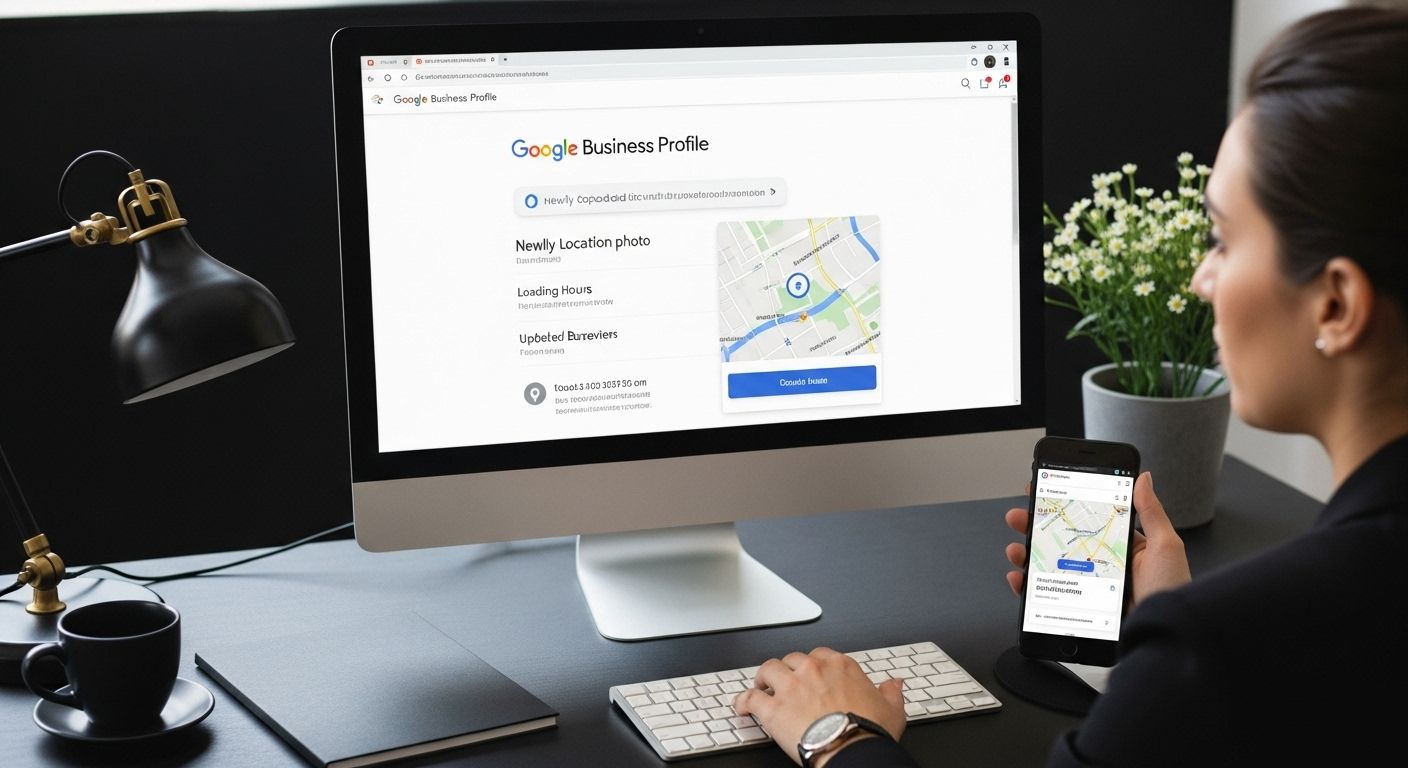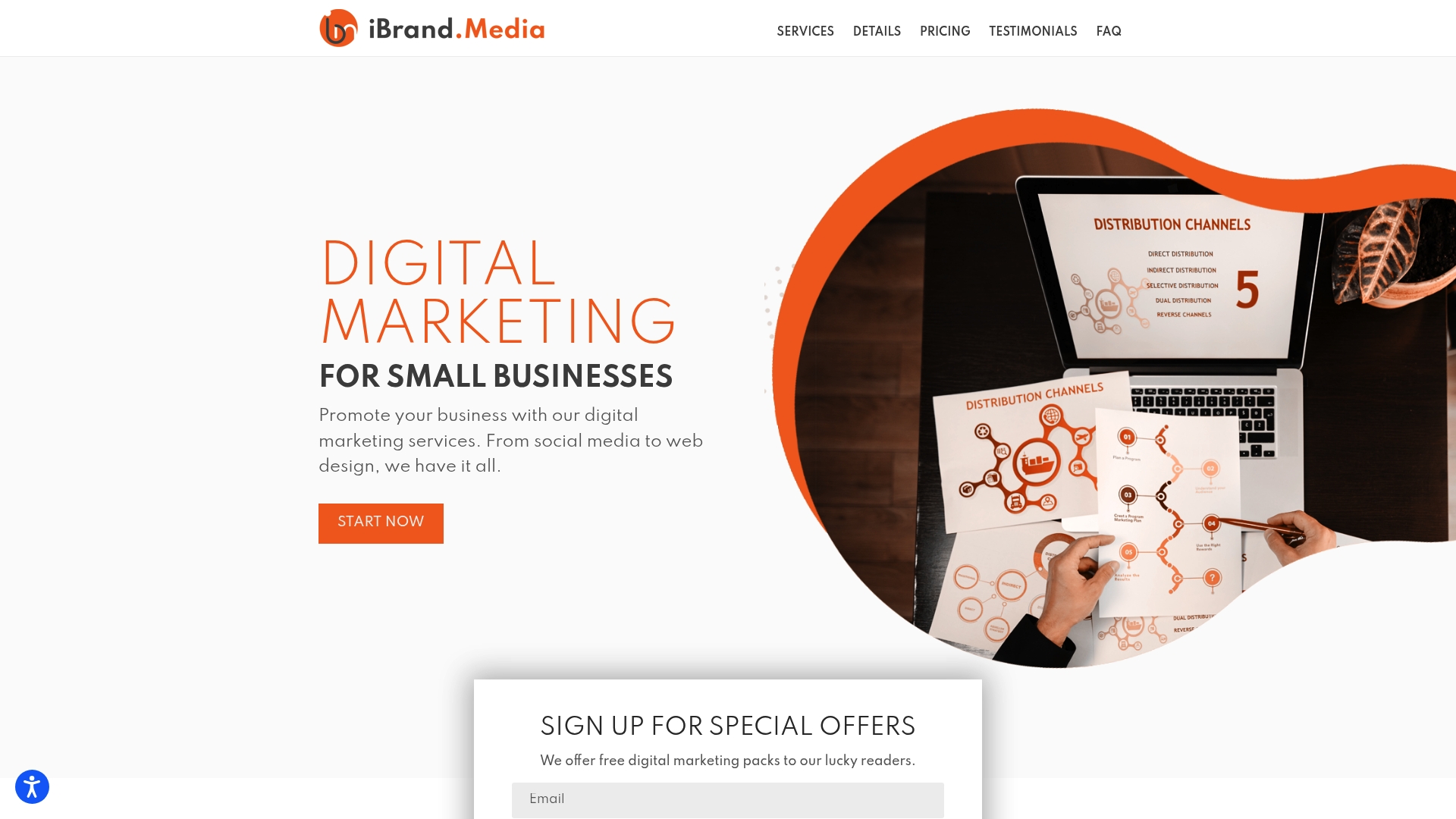Growing local sales online might sound straightforward, especially when small businesses in the US saw over 60 percent of consumers searching for nearby products each week. Surprising, right? Most businesses still miss out on these buyers because they skip crucial research and strategy steps. The real winners are the ones who know how to turn digital data into real local sales, and their methods may not be what you expect.
Table of Contents
- Step 1: Analyze Your Local Market And Competitors
- Step 2: Optimize Your Online Presence For Local Customers
- Step 3: Implement Targeted Local Marketing Strategies
- Step 4: Engage With Your Local Community Online
- Step 5: Monitor, Test, And Adjust Your Sales Strategies
Quick Summary
| Key Point | Explanation |
|---|---|
| 1. Understand your local market | Analyze demographics and consumer behavior to identify your target customers and tailor your offerings accordingly. |
| 2. Optimize your online presence | Ensure accurate Google Business Profile and website, using local keywords to enhance visibility and customer engagement. |
| 3. Implement targeted local marketing strategies | Use geo-targeted advertising and segmented email marketing to create personalized connections that boost local sales. |
| 4. Engage with your local community online | Foster genuine relationships by sharing relevant content and participating in community discussions to build brand loyalty. |
| 5. Monitor and adjust strategies regularly | Use analytics to evaluate performance and continuously refine your marketing tactics based on data-driven insights. |
Step 1: Analyze Your Local Market and Competitors
Successfully increasing local sales online begins with understanding your unique market landscape. This critical first step involves deep research and strategic analysis that will form the foundation of your digital sales approach. By thoroughly examining your local market and competitors, you create a targeted roadmap for online revenue growth.
Starting your market analysis requires collecting comprehensive data about your specific business environment. Begin by mapping out who your potential customers are within your local geographic area. Consider demographic details like age, income levels, consumer behaviors, and spending patterns. Local customer research isn’t just about numbers – it’s about understanding the human dynamics driving purchasing decisions in your community.
Utilize multiple research channels to gather insights. Local chamber of commerce reports, census data, and regional economic publications provide valuable statistical information. Online tools like Google Trends can reveal search behaviors specific to your local market. Social media platforms also offer incredible insights into customer preferences and engagement patterns.
Competitive analysis represents another crucial component of this initial research phase. Map out direct and indirect competitors operating in your local market. Study their online presence, pricing strategies, service offerings, and digital marketing approaches. What makes them successful? Where do they potentially fall short? This examination helps you identify strategic opportunities to differentiate your business.
Professional market research doesn’t require expensive consultants. Learn how to run local market research effectively using cost effective digital tools and strategic approaches. Small businesses can achieve remarkable market insights through systematic, methodical research.
Verify your market research by asking critical questions:
- Does the collected data reveal clear customer needs?
- Have you identified at least 3-5 key competitive differentiators?
- Can you articulate your unique value proposition based on market insights?
Remember, thorough market analysis transforms guesswork into strategic action. Your research becomes the blueprint for targeted online sales strategies that resonate directly with local customers.

Step 2: Optimize Your Online Presence for Local Customers
Optimizing your online presence transforms how local customers discover and engage with your business. This crucial step bridges the gap between your market research and actual digital visibility, ensuring potential customers can easily find and connect with your brand. Your digital footprint becomes your virtual storefront, communicating professionalism and accessibility.
Begin by creating a comprehensive and accurate Google Business Profile. This free tool allows you to manage how your business appears across Google Search and Maps. Include high quality photographs of your location, precise business hours, contact information, and detailed service descriptions. Regularly update your profile with current information and respond promptly to customer reviews. Authentic engagement signals reliability to potential customers.
Website optimization represents another critical component of local digital presence. Your website must be mobile responsive, load quickly, and include clear local contact information. Implement local keywords naturally throughout your content, focusing on phrases potential customers might use when searching for services in your area. Location specific content creates stronger search engine connections and helps potential customers understand your local relevance.
Discover advanced local customer targeting techniques that go beyond basic website optimization. These strategies help small businesses create more meaningful online connections with their immediate community.
Social media platforms offer additional opportunities for local visibility. Create business profiles on platforms like Facebook and Instagram, using consistent branding and local imagery. Share content that resonates with your community – highlight local events, showcase community involvement, and demonstrate your understanding of local customer needs.
Verify your online presence optimization by checking these key elements:
- Is your business listed accurately on major online directories?
- Do your website and social profiles include complete, current contact information?
- Can customers easily find and navigate your online resources?
Remember, online optimization is an ongoing process. Regularly review and update your digital platforms to maintain relevance and engagement with local customers. Your goal is creating a seamless, professional online experience that converts digital visibility into real world sales.

Step 3: Implement Targeted Local Marketing Strategies
Targeted local marketing transforms your digital research and optimization efforts into tangible revenue opportunities. This step focuses on creating strategic connections with potential customers in your immediate geographic area, turning online visibility into actual sales engagement. *Your marketing strategies become precision instruments designed to attract and convert local buyers
*.
Digital advertising platforms offer powerful geo targeting capabilities that allow you to reach customers within specific zip codes or radius ranges. Facebook Ads and Google Ads provide granular location based targeting options that enable you to display advertisements only to individuals within your defined local market. Craft compelling ad content that speaks directly to local customer pain points and highlights your unique community connection.
Email marketing represents another potent strategy for local customer acquisition. Build an email list by offering valuable local content or exclusive community discounts. Segment your audience based on neighborhood, purchasing history, or specific interest categories. Personalized communication increases engagement and builds customer loyalty. Send targeted newsletters featuring local events, seasonal promotions, or community focused content that resonates with your specific audience.
Learn advanced techniques for developing local marketing campaigns that transform digital interactions into meaningful business relationships. Understanding the nuanced approach to local marketing can dramatically improve your conversion rates.
Social media platforms provide additional opportunities for local marketing. Create content that demonstrates your deep understanding of local community dynamics. Share behind the scenes glimpses of your business, highlight local partnerships, and engage with community events. Platforms like Instagram and Facebook allow you to tag local locations, increasing your visibility among nearby potential customers.
Verify your local marketing strategy effectiveness by assessing these critical indicators:
- Are your advertisements generating measurable local engagement?
- Does your content reflect authentic local community understanding?
- Can you track specific conversions resulting from targeted marketing efforts?
Remember that successful local marketing is an ongoing conversation with your community. Continuously refine your approach, stay responsive to local customer feedback, and remain adaptable to changing market dynamics. Your goal is creating marketing strategies that feel personal, relevant, and genuinely connected to your local customer base.
Step 4: Engage with Your Local Community Online
Engaging with your local community online transforms digital connections into meaningful relationships that drive sales and brand loyalty. Your online presence becomes more than a marketing tool – it becomes a genuine conversation with your local customers. This step focuses on creating authentic interactions that position your business as a trusted community partner.
Social media platforms offer exceptional opportunities for local community engagement. Select platforms where your target customers are most active, typically Facebook and Instagram for most local businesses. Share content that goes beyond product promotions – highlight local events, celebrate community achievements, and demonstrate your genuine connection to the neighborhood. Respond quickly to comments and messages, showing that real people stand behind your business.
Local online groups and forums represent powerful engagement channels. Join neighborhood Facebook groups, community discussion boards, and location specific online communities. Contribute valuable insights, answer questions, and provide helpful information without aggressive selling. Your goal is establishing trust and positioning yourself as a knowledgeable local resource. When community members recognize your expertise, they naturally become more likely to choose your business.
Discover advanced techniques for meaningful online community interactions that transform digital platforms into relationship building tools. Understanding nuanced community engagement strategies can significantly impact your local sales approach.
Consider creating localized content that speaks directly to community interests. Host online Q&A sessions, share behind the scenes glimpses of your business, or create video content showcasing local partnerships. Collaborate with other local businesses for cross promotional activities that expand your reach and demonstrate community spirit. These strategies humanize your brand and create deeper connections beyond transactional relationships.
Verify your community engagement effectiveness by assessing these key indicators:
- Are you receiving meaningful comments and interactions on your posts?
- Do community members recognize and recommend your business?
- Can you track increased local interest resulting from your engagement efforts?
Remember that genuine community engagement is a continuous process. Stay consistent, authentic, and responsive. Your online interactions should reflect the same care and professionalism you would demonstrate in face to face community interactions. By building trust and demonstrating your commitment to local customers, you transform digital platforms into powerful sales generation tools.
Step 5: Monitor, Test, and Adjust Your Sales Strategies
Successful online sales strategies require continuous monitoring, testing, and strategic refinement. This final step transforms your marketing efforts from static approaches to dynamic, responsive systems that adapt to changing customer behaviors and market conditions. Your goal is creating a flexible framework that consistently improves your local sales performance.
Utilize robust analytics tools like Google Analytics and Facebook Insights to track key performance metrics. Monitor critical indicators such as website traffic, conversion rates, customer engagement, and sales funnel progression. Pay special attention to which marketing channels generate the most qualified leads and highest conversion rates. These insights reveal where to concentrate your resources and which strategies require immediate adjustment.
Implement A/B testing as a systematic approach to strategy optimization. Create multiple versions of your marketing materials, website landing pages, and advertisement designs. Test one variable at a time – such as headline text, image selection, or call to action placement. Carefully measure the performance differences and use data driven insights to make informed decisions. Small, incremental changes can produce significant improvements in your overall sales performance.
Discover comprehensive techniques for refining your digital marketing approach that transform data into actionable strategies. Understanding the nuanced art of marketing optimization can dramatically increase your local sales potential.
Regular strategy reviews are essential for maintaining marketing effectiveness. Schedule monthly or quarterly strategy assessment meetings where you analyze performance data, discuss emerging trends, and plan strategic adjustments. Be prepared to pivot quickly if certain approaches are not delivering expected results. Flexibility and responsiveness are key characteristics of successful local online sales strategies.
To help you verify your progress after each main step, use this checklist to ensure all critical elements are covered before moving forward.
| Step | Key Verification Point | Completion Criteria |
|---|---|---|
| 1. Analyze Local Market | Data reveals clear customer needs | At least 3-5 differentiators identified; clear value proposition articulated |
| 2. Optimize Online Presence | Accurate listings and contact info | Business appears properly in directories; website and social profiles updated |
| 3. Local Marketing Strategies | Targeted campaigns active and trackable | Local ads generating engagement; content reflects community insight |
| 4. Community Engagement | Receiving authentic local interactions | Meaningful social comments; business recognized in groups |
| 5. Monitor & Test | Consistent metric tracking and improvements | Tracking key metrics; testing leads to measurable gains |
Verify the effectiveness of your monitoring and testing process by assessing these critical indicators:
- Are you consistently tracking and understanding your key performance metrics?
- Can you demonstrate measurable improvements from your testing efforts?
- Have you established a systematic approach to strategy refinement?
Remember that monitoring and testing are ongoing processes. Market conditions change rapidly, and customer preferences evolve continuously. Maintain a curious, experimental mindset. Your willingness to learn, adapt, and improve will ultimately determine your success in increasing local sales online. Treat each data point as an opportunity to understand your customers better and refine your approach.
Ready to Unlock Real Local Sales Growth Online?
Is your business struggling to turn website visits into real local sales? Taking action on strategies like market analysis, digital presence, and community engagement often feels overwhelming when you need results fast. Many businesses find it difficult to stand out online or to see measurable returns from their online investments. It is tough to manage everything alone especially as competition grows and consumer habits change quickly. Our article shows the critical steps to boost your local sales online, but putting those strategies into practice is what sets top performers apart.

Here is your path forward. Experience the full potential of expert support with a partner that specializes in affordable local marketing, SEO, web design, digital advertising, and real-time performance tracking for small businesses. ibrand.media offers tailored plans that bring your unique sales goals to life. See how we help businesses like yours with proven results by exploring our Uncategorized solutions and get started today. Take the next step now to maximize your local online sales and let our team guide you every step of the way. Visit ibrand.media and ask for a custom plan that delivers. Your competition is already moving. Will you take the lead?
Frequently Asked Questions
How can I analyze my local market to increase sales?
To analyze your local market, start by researching potential customers’ demographics, spending patterns, and behaviors. Utilize sources like chamber of commerce reports, census data, and online tools such as Google Trends to gather valuable insights about your community.
What are the key components to optimize my online presence for local customers?
Key components for optimizing your online presence include creating an accurate Google Business Profile, ensuring your website is mobile responsive with local keywords, and maintaining updated contact information across all digital platforms. Regular engagement on social media also enhances visibility.
What targeted local marketing strategies can drive higher sales?
Targeted local marketing strategies include using geo-targeted ads on platforms like Facebook and Google, building an email list for personalized communication, and creating community-focused content that resonates with local customers. Collaborating with other local businesses can also enhance your reach.
How can I effectively engage with my local community online?
Engage with your local community by sharing relevant content on social media, participating in local online groups, and providing valuable insights without aggressive selling. Hosting online events and collaborating with local businesses can also strengthen your community relationships.
Recommended
- Top Benefits of Local Advertising for Small Businesses in 2025 | Ibrandmedia
- How to Attract Local Customers in 2025: Smart Strategies for Small Businesses | Ibrandmedia
- Top Local Online Marketing Strategies for 2025 Success | Ibrandmedia
- Top Benefits of Local Marketing for Small Businesses 2025 | Ibrandmedia
- Fluum | What is Google Ads for Local PT Sessions
- Next Door Mover: Moving Keywords for Customer Engagement

Recent Comments